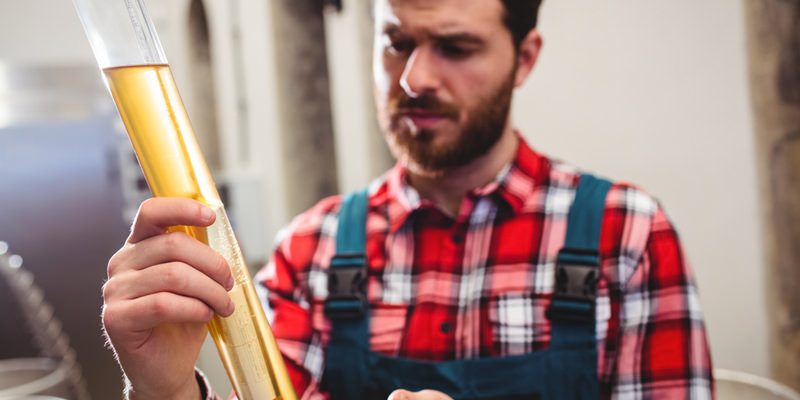Whether your drink of choice is vodka, Pinot Noir, or cider, you’ve probably noticed a change at bars and retailers lately: The selection is exploding. From craft beers to artisanal scotches and wines of every imaginable provenance, the American alcohol market is just plain booming, and it’s not slowing down.
Political divides aside, drinkers and producers of all stripes have the government to thank for this one. This year, they’ve made it easier than ever to both make and sell the libations that get us through good days and bad.
First, the Tax and Trade Bureau (TTB), the federal office that governs the alcohol industry, eliminated bond requirements for small breweries, wineries, and distilleries. In essence, a bond is a pre-paid amount of tax that the government holds as collateral to make sure booze producers pay their other taxes and generally play by the government’s rules. But applying for bonds is time consuming, technical (they require submitting elaborate architectural plans of any production space), and requires a large capital outlay up front, a serious strain for businesses that have no cash flow. By eliminating the bond requirement, this amendment removed a major hurdle for new producers, making it significantly cheaper and easier for newbies to start out as a small brand.
This modification to the Internal Revenue Code finally took effect on January 1. According to this new tax law, breweries, wineries, and distilleries that expect to pay less than $50,000 in excise taxes are exempt from the bond requirement, and can operate under simple permit instead. Taxes are calculated based on volume and alcohol content, so the cost savings for producers varies, but the impact overall is huge. According to data from 2015, nearly 90 percent of America’s breweries are small enough to avoid the bond requirement. Now, they can apply to receive a refund of their original bond payment and operate under the small-producer permit instead. And they can use their capital to make more drinks!
But there’s even better news for consumers. It’s becoming easier than ever to get those cans or bottles delivered to your door. Thank your state legislators here, because they’re continuing to relax outdated regulations on interstate alcohol shipping, making it easy for new and small brands to sell their wares across the nation. More states are making it legal to ship beer, wine, and spirits to your doorstep.
Though each state still has different taxes and tax rates for these sales, the easing of regulations means you can join wine clubs, ship alcohol from tasting rooms, or order small-batch beer and spirits online within most states.
According to Rex Stults, Government Relations Director of the Napa Valley Vintners Association (NVV), increased Direct to Consumer (DTC) sales are a win for every wine drinker. “We work actively to help make it happen,” Stults says. NVV is a co-founder, along with Wine Institute, of “Free the Grapes!” — a non-profit organization that engages consumers and media in an effort to open all states to the possibility of directly shipping wine.
Pennsylvania, Indiana, and Massachusetts are among the states to recently begin allowing direct wine shipments to consumers, and only 5 states still restrict wine shipments. Others have some form of regulation on different types of alcohol, though Free the Grapes! and other special interest groups are working to change that. As laws evolve and the DTC market becomes easier to navigate, more wineries are offering shipping for customers near and far.
As with expensive bonds, small producers often face steep challenges to selling their wares, even after jumping through the flaming hoops required in an alcohol-centric business. But selling directly via mailing lists, tasting rooms, and the internet would allow producers to bypass distributors — who were previously the only legal way to sell across state lines — and make significantly larger margins.
“For many small producers, it is either DTC sales or go belly up,” explains Stults. “Napa Valley is made up primarily of small, family-owned wineries. The challenge is that, unless you are a longstanding brand with fairly substantial production volume, it is difficult to get the attention in the wholesale distribution market.” Thanks to relaxing regulations, things are looking up. “There is more and more wine being produced in the U.S. and there are more folks drinking wine in the U.S., but the number of distributors has shrunk dramatically,” he says.
That’s because of DTC sales. And there’s data to prove that we, as drinkers, are happy to shop online for wine, beer, and spirits. In 2016, direct wine sales alone reached $2.33 billion according to data compiled by ShipCompliant and Wines Vines Analytics, with most growth coming from small and very small wineries that aren’t available in major retailers nationally. In short, more bottles, cans, and bags-in-boxes, are hitting the market than ever before.
These legal changes may take up just a few lines within the jargon that dominates government edicts, but for the small brands that make up the majority of the new American booze scene, the impact is enormous. Supporting beverage makers means more opportunities to try the “best” new IPA, bourbon, or boutique wine, and that means 2017 is the year all drinkers win.
Cheers to that!


